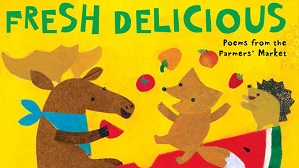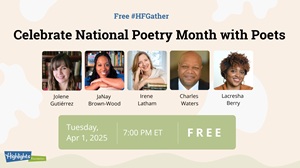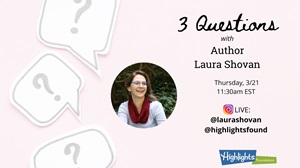Bernice Cullinan, founder of Wordsong (the only imprint in children’s publishing in America dedicated to poetry) gave these remarks at our 15th Annual Writers Workshop at Chautauqua, in 1999. Here’s what Bernice had to say about good poetry for children:
Good poetry stirs up appropriate emotions. Children laugh, cry, wonder, and appreciate different things at different ages. Their sense of humor and what they understand changes as they grow.
Good poetry enriches the school curriculum; it helps students learn about the multicultural nature of their world, as well as history, social studies, science, environmental issues, math, language, and writing.
Some good poetry helps children learn how to read. It has short lines, words that rhyme or show a sound pattern. Children can predict what the word is likely to be because it sounds like a preceding one. Some poetry books are written in a predictable, patterned language style.
Good poetry creates images in the mind. Poetry promotes language learning because it contains emotionally charged words, uses only a few words to say a great deal, is melodic – sings as it says, contains rhythm repetition and rhyme, captures the essence of a concept, has layers of meaning, and is the natural language of childhood.
Here are 8 questions to ask yourself about your book of poetry for children:
- Do I have a unifying theme that makes the book cohesive?
- Is there a reason for the sequence? Why does the next poem follow here?
- Is there a beginning, middle, and end? Does the collection tell a story?
- Have I maintained the perspective of the child or teenage reader?
- Have I laid out a “dummy” book to determine layout, flow, sequence?
- Have I used action words and nouns, e.g. “helicoptered past your window”?
- Have I used a variety of poetry forms, patterns, rhyme schemes, and un-rhymed line?
- Have I said my poem to audiences frequently to observe response?






